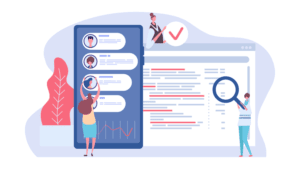
For example, let’s say you need to decide between advertising in your established niche or branching out to a new market. The former will likely yield a better bottom line in the here and now, while the latter may involve a longer client acquisition process but could help you grow in the long run. Of course, you can use a different method that works for your company, but the point is that you need an established groundwork for making a decision.
Structure Your Team
- By following a decision-making framework, individuals and organizations can make more informed and rational choices.
- The rational decision-making model is best employed when you have numerous options to consider and plenty of time to evaluate them.
- The Vroom-Yetton-Jago Decision Model helps leaders determine the appropriate level of involvement their team should have in the decision-making process.
- For instance, a strategic executive might use this model to decide whether to involve their whole team in developing a new product strategy or to act independently based on their expertise.
Let’s review how our decision-making frameworks have evolved over the past few decades. Employees feel safe to express their ideas in a constructive environment. While surrendering complete control can be a challenge for some leaders, micromanagement will lead to a hostile work environment. Putting clear principles and best practices in place will ensure everyone is on the same page, and it makes it easy to get new hires up to speed. Simple decisions can be made faster so that not everything https://www.bookstime.com/ needs to be run by the manager.
- First, the group must devise a list of possible alternatives to a pending decision.
- In this article, we’ll describe how to vary your decision-making methods according to the circumstances.
- Encouraging open communication, active listening, and fostering a culture of collaboration can help navigate through such challenges.
- These decision-making process tools not only enhance efficiency but also ensure that choices are strategic, data-driven, and aligned with organizational goals.
- As an aspiring leader, mastering these frameworks is not just beneficial—it's essential for aligning your decisions with organizational goals and fostering long-term success.
- Next, settle on and reach out to the people who will be involved in the decision.
Identify alternatives
- Aspiring leaders benefit greatly from seeing these frameworks in action, as real-world applications and case studies offer concrete examples that illustrate their efficacy.
- They provide aspiring leaders with a reliable foundation for tackling complex decisions, minimizing risks, and capitalizing on opportunities.
- While the ‘art’ comes in how you engage your team, gather (and ignore) opinions, and announce your choice.
- That’s why the path to better decision making need not be long and complicated.
- Alteryx can help you segment your customers, dissect costs, forecast customer behaviors, and more.
- Understanding these models will further enhance your ability to make effective decisions and drive your organization's success.
One such model that found widespread use was the analytical hierarchy process, which allowed organizations to rank alternative choices in terms of how well they fulfilled a set of predefined conditions. Did one decision making model lead to a more satisfying decision for your team, management, and customers? If you find one model works better than another or that one model could be better optimized with a few tweaks, make the necessary changes. Once you have decision making frameworks in place, the job’s all done, right? Just because something worked in the past doesn’t mean it will continue to work for everyone in perpetuity. The downside is this model isn’t excellent for large teams and organizations, as there are simply too many people to consider.

How a decision matrix clears the path to easier choices
According to McKinsey research, executives spend a significant portion of their time—nearly 40 percent, on average—making decisions. People struggle with decisions so much so that we actually get exhausted from having to decide too much, a phenomenon called decision making framework decision fatigue. Pinpointing the issue is the first step to initiating the decision-making process. Ensure the problem is carefully analyzed, clearly defined, and everyone involved in the outcome agrees on what needs to be solved.


Whether you’re experienced or just starting out, this guide will give you the knowledge and strategies to make impactful decisions. As theory becomes practice, the true value of comprehensive decision frameworks is realized. Aspiring leaders benefit greatly from seeing these frameworks in action, as real-world applications and case studies offer concrete examples that illustrate their efficacy. By examining these instances, emerging leaders can gain actionable insights into effective decision making for QuickBooks leaders while enhancing their strategic planning capabilities and commitment to continuous learning.
Decision Matrix
Looking at our board in a new light, we may conclude that an Airplane is more suitable. Let’s apply the framework recursively and define the Benefits, Risks, and Issues of each Solution variation the same way we did for the Subject. Now, it seems that the car is the best option because the Traveler won’t need to rent a car in LA.

Understanding the different biases
This is the realm of “known unknowns.” Here, leaders must sense, analyze, and respond. Join 150K+ business and HR leaders and stay up to date with our top resources. Microsoft’s Power BI is a convenient platform for data visualization and analytics.
